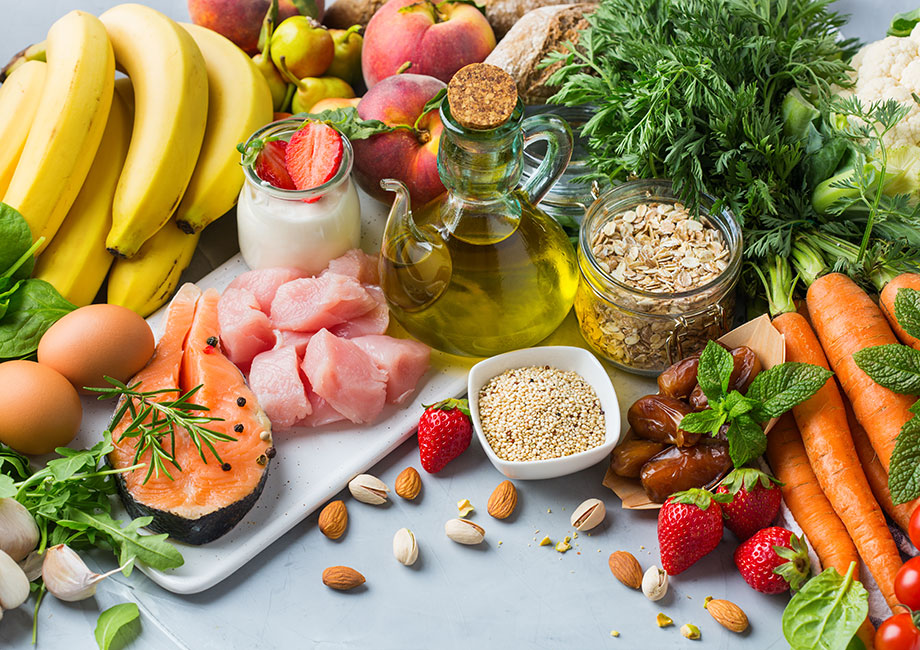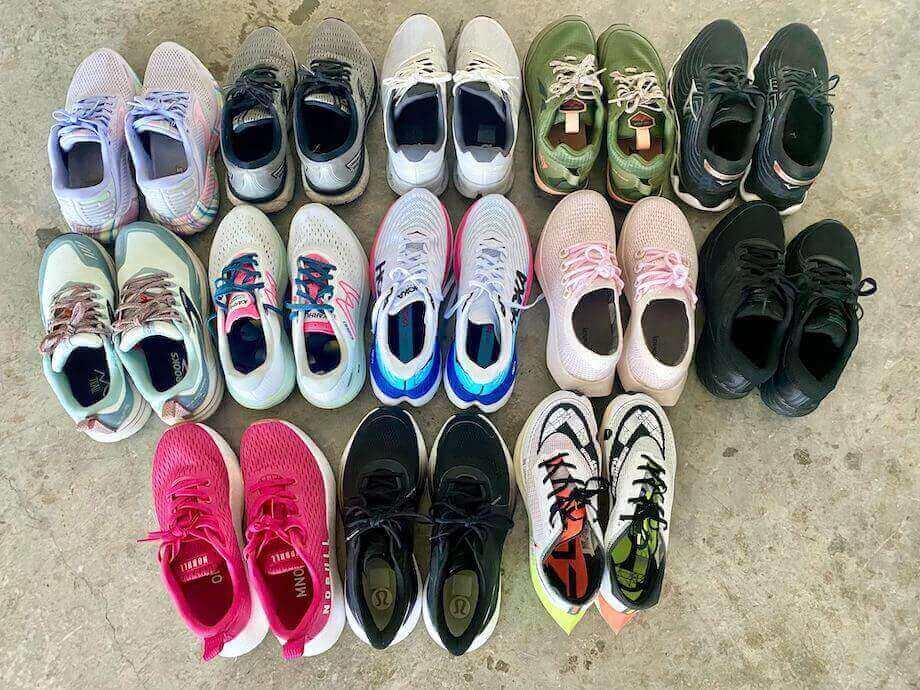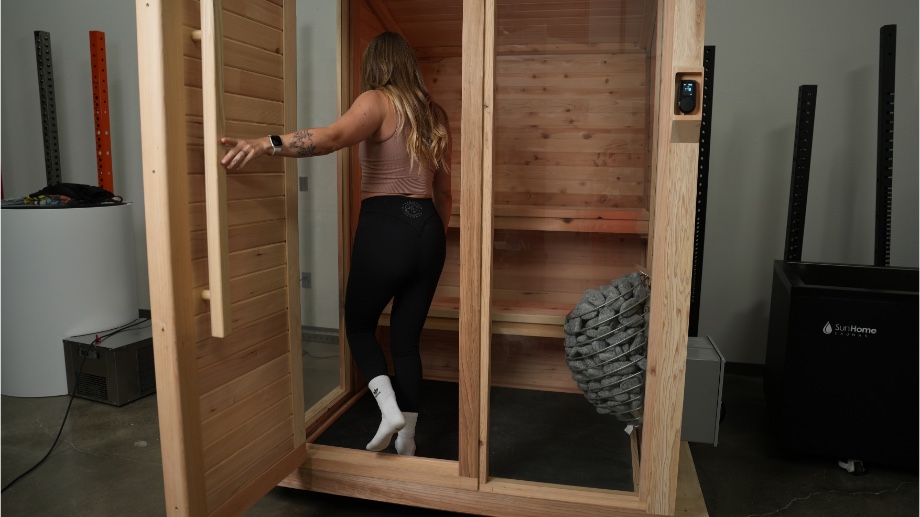Eating well and saving money are often at odds. Prices are already high, and choosing the most nutritious foods can really add to those costs—especially when you’re living paycheck to paycheck.
I’m no stranger to eating on a budget. As an undergrad and grad student in nutrition, I lived on a slim budget. But I learned the value of meal planning and how to spot budget-friendly foods.
That said, eating well doesn’t have to break the bank. In fact, eating healthy foods on a budget is actually pretty easy, it just takes a little bit of planning and commitment. In this article, I’ll share 11 tips with you on how to eat healthy on a budget.
RELATED: Homemade Protein Powder
What Is Healthy Eating?
A healthy diet consists of consistent intake of the appropriate macro and micronutrients1, according to your body’s energy needs. Nutritious meals that contain high protein, low fat foods are a good place to start. The USDA’s MyPlate2 resource can help you create a balanced diet on a budget. There are also a number of energy intake calculators you can use to determine your energy needs, which will help you refine your shopping list.
Healthy eating on a budget looks like healthy eating with an unlimited budget, just maybe without the caviar and free range eggs. In any case, healthy eating can be doable. Below are 11 easy to follow tips to help you stay healthy on a budget.
RELATED: How Much Carbs, Protein, and Fat per Day Do You Need?
11 Tips for Eating Healthy on a Budget
1. Plan Your Meals
The best way to start eating healthy on a budget is to plan ahead. Think of some of your go-to meals or recipes, maybe a week or two of meals, and go from there. Once you have a general idea of what meals you think you’ll eat, start to craft your grocery list. When making your grocery list, start with the essentials, then move on to bigger things. Do you like pasta? Lasagna and spaghetti noodles are the perfect base for wholesome meals. Consider upgrading to whole wheat pasta; the difference in price is small, but the protein and fiber content are almost double that of regular noodles.
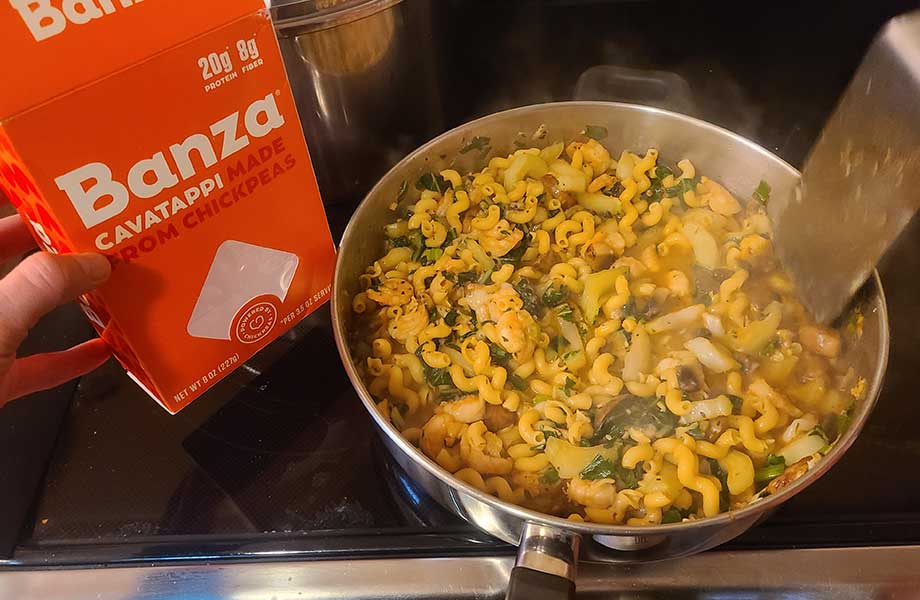
Be sure your list is sensible but includes foods you like, and maybe stick to one or two weeks of meals. You’ll need to stick to your list to see how the savings add up. After a while you should be able to compare lists or add substitutes for new meals.
I still do a good bit of meal planning, which lets me splurge on meal delivery services every now and then.
2. Pick Versatile Foods
If you’re creative, you can reuse certain foods for multiple meals, and really make your dollar stretch. For instance, beans and rice go together for a decent (bland) meal, but beans can spruce up your eggs, add protein to a salad, and so on. Potatoes are cheap and make a great side dish, but they also add a lot of density to a breakfast casserole. Point being, when making your list, try to think of the essentials, then add foods that you know are versatile. This beats trying to stock up on different ingredients for each meal every day.
3. Inventory
This step should be common sense, but it evades my absent mind quite a bit. Once you’ve finished your list, do an inventory of what you have on hand. Then decide if you need anything else, and pick a couple meals you can rotate through the week. Think of how you can use what you currently have, or what you won’t use much of.

Consider your foods’ expiration dates. Don’t buy a lot of foods with a short shelf life, like milk or yogurt. Do buy foods that last a while or can be stored in the pantry. Canned anything generally lasts a long time and is usually cheap. Eggs surprisingly last quite a while if handled properly.
Point being, know what you have and compare that to your grocery list.
4. Budget
If you can, create a weekly food budget. Allocate funds to this specifically, stick to it, and avoid impulse buys. This is great advice, but not always easy when bills pile up and life gets in the way.
Budgets are really specific not only to each person, but to each area. Some people are fortunate to have multiple grocery stores within a mile radius, while others have to make a special trip just to get to a half-decent produce section.
The best way to budget is to track your expenses and compare them to your list. Let’s say you have $75 for two weeks of groceries (been there). Once it’s time to go shopping again, compare your receipts from your last trip to your next grocery list. Try to find coupons, or opt for store brands.
RELATED: Best Healthy Meal Delivery Service
5. Cook and Prep at Home
This probably goes without saying, but prioritize cooking at home in lieu of fast food or other take out. Eating out is often a large expense, especially with delivery fees and up charges. It’s just not worth it. But I get it, sometimes it hits the spot.
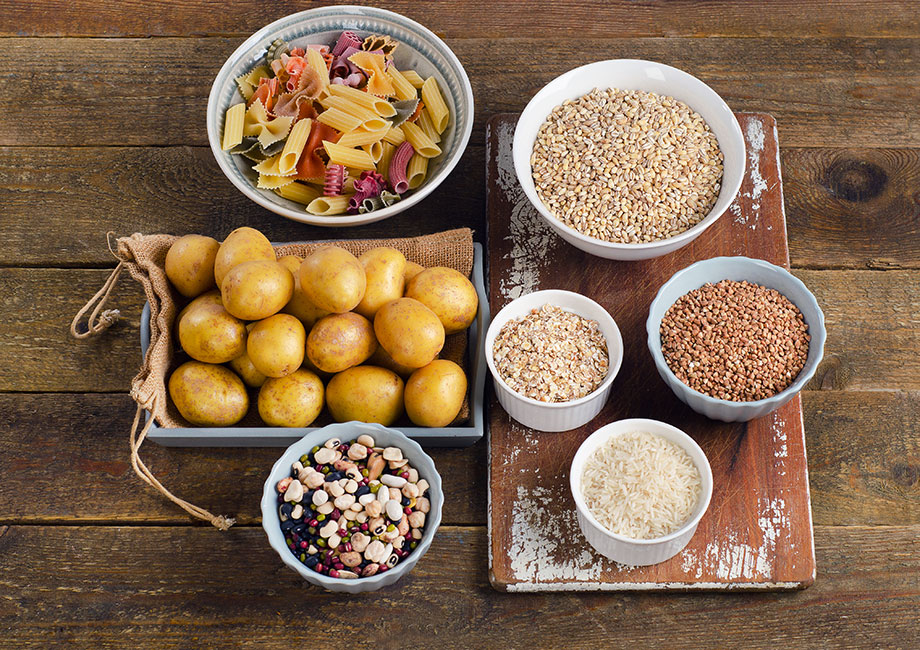
When you cook and prep at home, you have full control over what you eat and when. You can make big dishes like casseroles, stir-fry, and stews. Plus, you can modify these in so many ways so you won’t get tired of them too quickly. Slow cookers are also a great way to make hearty, long-lasting meals.
Cooking at home also means you can make multiple dishes with limited ingredients. Ingredient sharing across dishes is yet another way to make healthy meals, reduce food waste, and maintain a budget-friendly, balanced diet.
RELATED: Protein Smoothie Recipes
Finally, try meal prepping. Cook for the week, not just the day ahead. This is a great way to understand portion sizes and how they relate back to costs. By investing a little time at the beginning of the week, you can save time later on. In grad school I had to teach portion sizes and how they related to macronutrient intake. You’d be surprised how much we over serve ourselves! Save yourself some grief and get familiar with proper portion sizes. Just make sure you don’t over-prep—you don’t want anything to go to waste because you got too excited!
6. Go Meatless
Eating less meat is a good way to save money and increase your increase of plant-based proteins, as well as fresh produce and veggies. Legumes like lentils and chickpeas are great high-protein foods. Add brown rice and black beans and you have a complete protein that you can serve alone or as part of loads of healthy meals, like in salads or pastas.
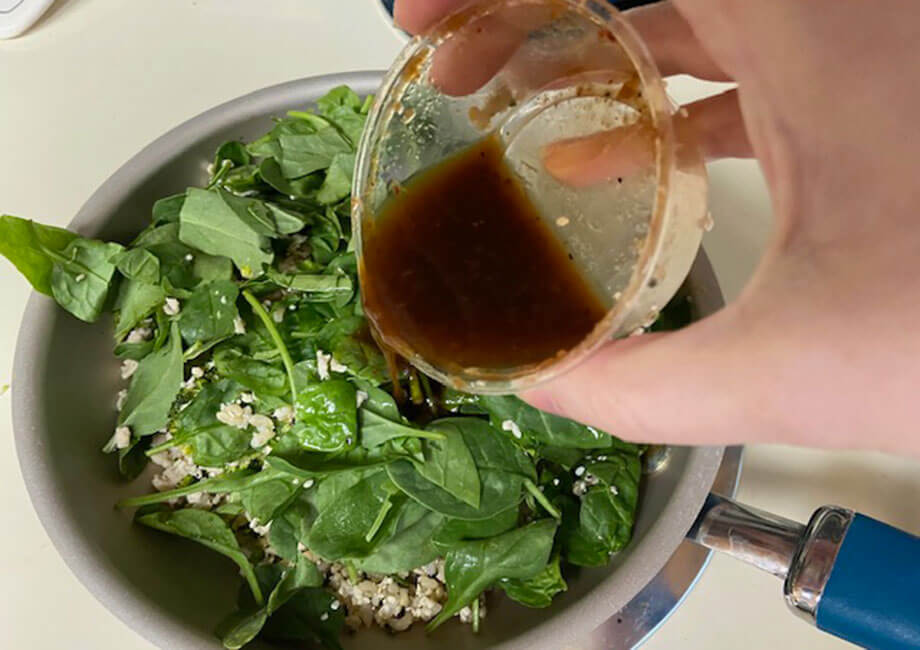
If you prefer to keep meat in your diet, opt for cheaper cuts of meat like chicken breast or pork shoulder or loin. Also—and this is what my wife and I always do—buy meat when it’s on sale and freeze whatever you don’t need right away. Remember what you bought, though, because chicken with freezer burn is no good.
RELATED: Best Vegan Protein Powder
7. Shop Smart
I think shopping smart is the best tip for healthy eating on a budget. If you know your way around a grocery store, healthy eating on a budget will become second nature. Try to stick to a single store that you know has decent prices and even membership discounts.
One thing I always do is buy store brands over name brands. Store brands have the same nutrient profiles as name brands, and are usually much cheaper. They often sometimes come from the same distributor, so there is literally no difference.
8. Opt for Canned and Frozen Foods
When grocery shopping, it’s never a bad idea to get familiar with the produce section. Whole foods and fresh produce are nutrient dense, but they can sometimes be a luxury. If you don’t need produce as your main ingredients, opt for frozen fruit and veggies. Frozen produce has the same nutrient content as fresh produce, but it lasts way longer. Plus, frozen produce, I’ve found, is much more versatile. And, most importantly, it’s cheaper than fresh produce. The downside is you may not have the variety of frozen veggies that you do fresh.

Don’t be afraid of canned foods. Non-perishable items like beans and canned veggies have a long shelf life and they’re usually cheaper than their fresh counterparts. In fact, canned chicken, for example, can be cheap compared to whole, fresh chicken. It also lasts longer and you’re not obligated to eat an entire chicken.
RELATED: High Protein Meals
9. Whole Grains Are Good
Whole grains are a game changer. Whole grain cereals and breads aren’t a budget buster, and they’re way more nutrient dense than regular processed foods. In fact, plain store brand white bread is roughly the same cost as store brand whole grain bread, but the latter usually tastes better (IMO) and has more fiber, which is good for your gut.
10. Read Food Labels
Food labels contain all the info you need to help you understand portion sizes and nutrient density. Food labels are a good way to level up your shopping know-how and keep your wallet happy. I wouldn’t say you should nerd out on cost per serving, but knowing a serving size will help you buy the right amount and make accurate portions.
11. Track Your Macros
This isn’t a hard and fast rule for eating well on a budget, but it IS a good way to understand your eating habits, as well as the nutrient content of your food. I encourage my personal training clients to track their meals for a week or two. This way they get a good sense of what they actually eat in a day, and where their nutrients are coming from. You can also relate this back to the cost of each food.

Tracking your diet and your fitness can help you develop and stick to your wellness goals, not to mention your budget. If you’re looking for something to keep you on track, try one of these free workout apps. We’ve also compiled a review of the best health apps for even more coverage.
How to Eat Healthy on a Budget: Final Thoughts
Maintaining your health on a budget can be challenging, but it’s not impossible. There are a ton of sites that promise to help you unlock the secrets to healthy eating on a budget, but the tips we presented here should be all you need to stay healthy and save your money for a night out.
The most important things to remember are to plan your meals and your budget—weekly is easy to stick to. There are a few more things to consider:
- Create a sensible budget that covers the essentials but affords some healthy snacks.
- Prep your meals ahead of time. This saves time and money and affords you leftovers.
- Cook your meals at home. Reduce waste and reliance on fast food or take out.
- Eat less meat. Meat is often the most expensive food.
- Shop smart. Know how to navigate the grocery store, read food labels, and find deals.
These are strategies that helped me eat well and save my money. I learned my way around the kitchen, and became a master of farmer’s markets and grocery stores.
How to Eat Healthy on a Budget: FAQs
Can you eat healthy on a low budget?
Absolutely. Eating healthy just requires a little know-how and some commitment. If you are on a budget, meal planning and home cooking are good ways to eat healthy, affordable foods. Store brands will generally cost less than name brands.
What are the three Ps for eating healthy on a budget?
The “three Ps” of healthy eating are plan, purchase, and prepare. Plan: Plan your grocery shopping with a budget and a sensible shopping list.Purchase: Develop a budget, use coupons, purchase store brands. Buy whole foods, fresh produce, frozen fruit, and canned goods.Prepare: Develop a rotating list of recipes, share ingredients across meals, and practice weekly meal prepping.
What can you eat if you can’t afford healthy food?
Healthy food is affordable and easy to access on a budget. You just have to learn to find deals and shop around healthy recipes. Start simple, such as buying canned or frozen vegetables. Stock up on the essentials. Upgrade to whole grains. Add beans, lentils, and legumes to your diet to increase protein and fiber.
Do I need to buy organic?
No. According to a systematic review published in 20203, there is little difference in health outcomes between organic and non-organic foods. Organic foods also tend to be more expensive.
References
- Cena H, Calder PC. Defining a Healthy Diet: Evidence for The Role of Contemporary Dietary Patterns in Health and Disease. Nutrients. 2020 Jan 27;12(2):334. doi: 10.3390/nu12020334. PMID: 32012681; PMCID: PMC7071223.
- MyPlate Plan. MyPlate. (n.d.). https://www.myplate.gov/myplate-plan
- Vigar V, Myers S, Oliver C, Arellano J, Robinson S, Leifert C. A Systematic Review of Organic Versus Conventional Food Consumption: Is There a Measurable Benefit on Human Health? Nutrients. 2019 Dec 18;12(1):7. doi: 10.3390/nu12010007. PMID: 31861431; PMCID: PMC7019963.



